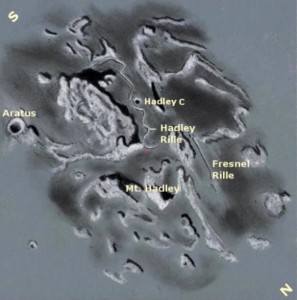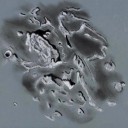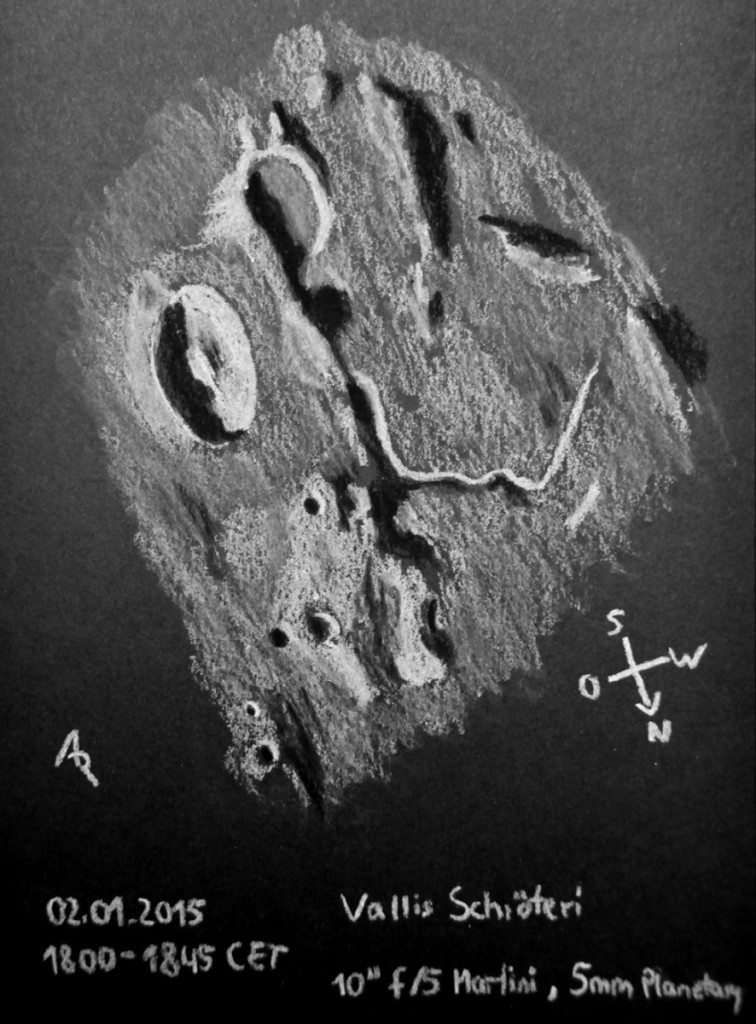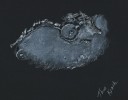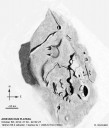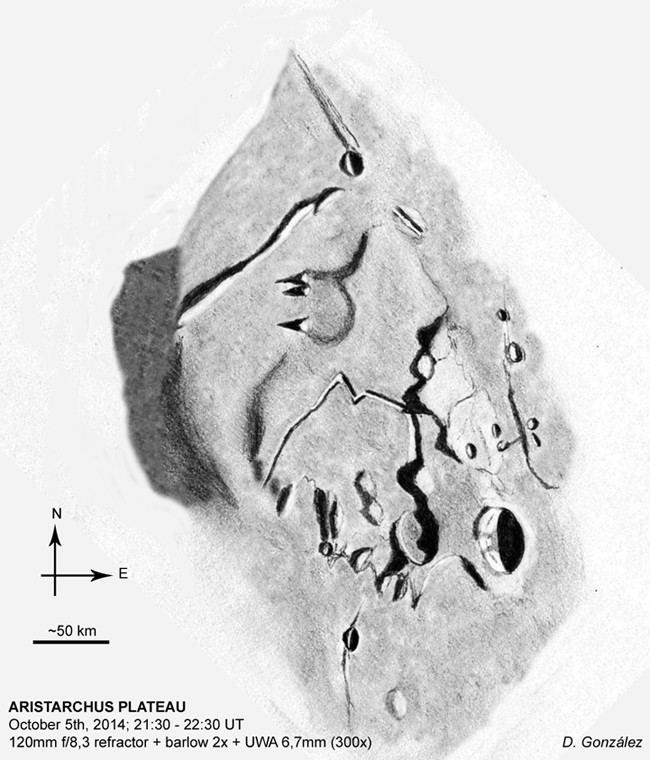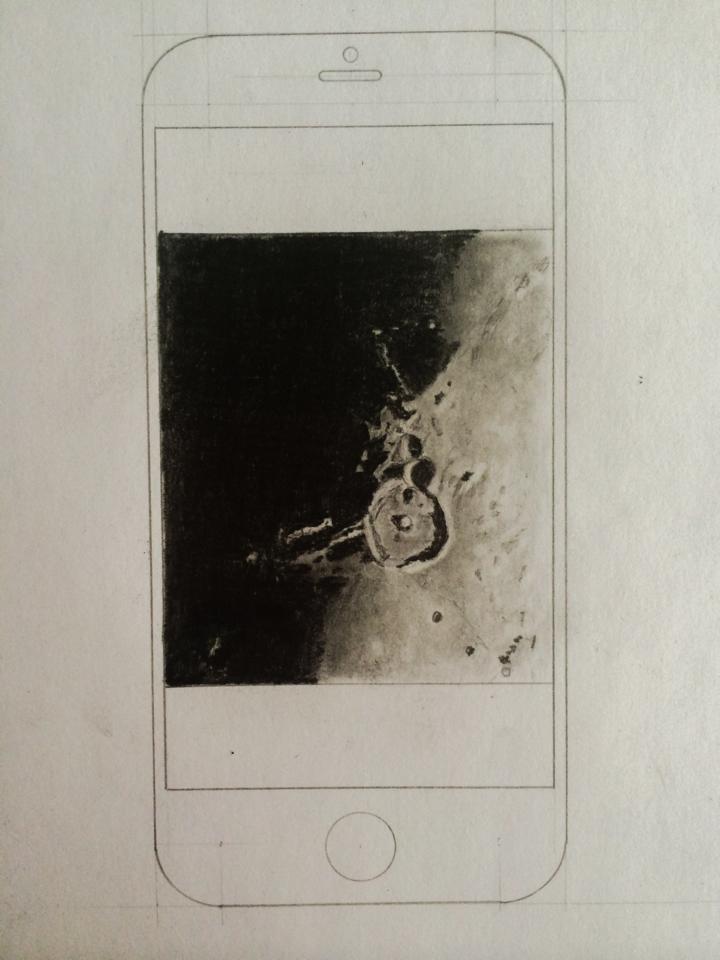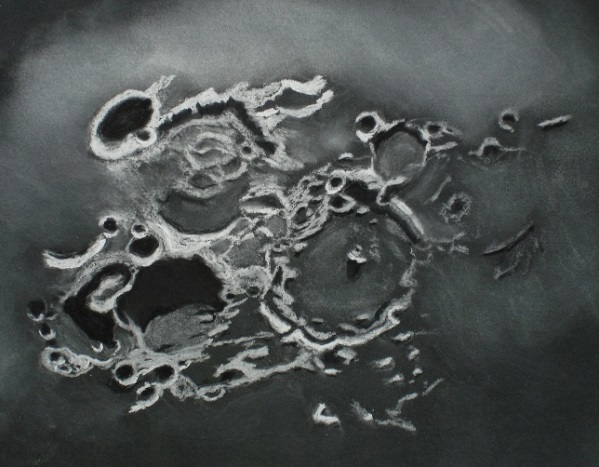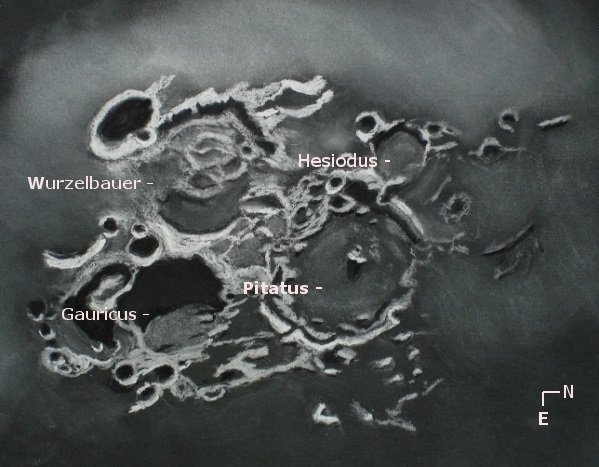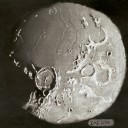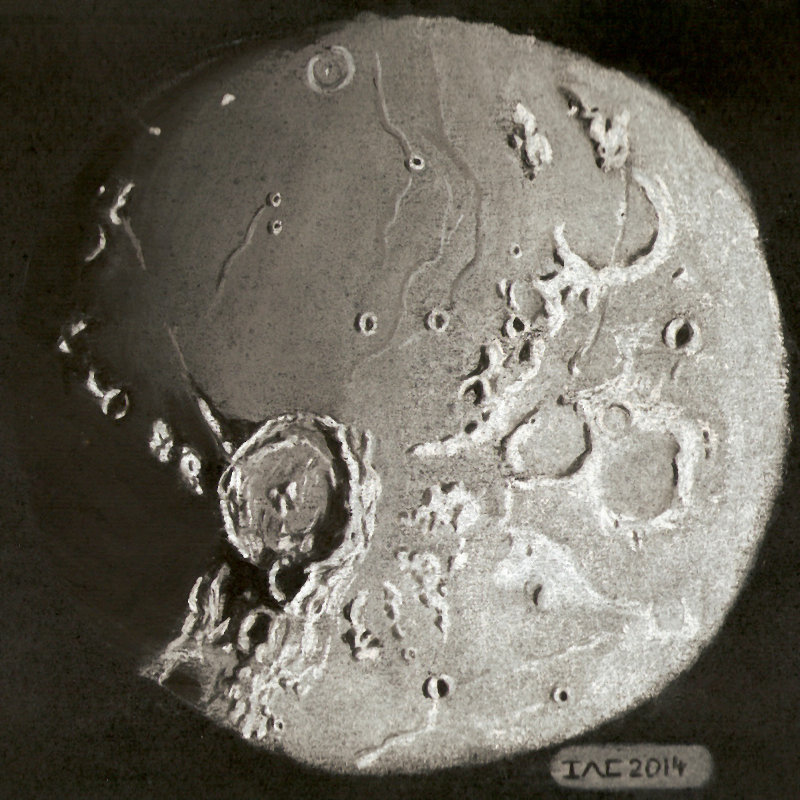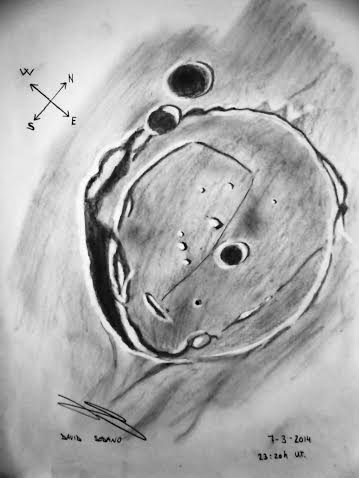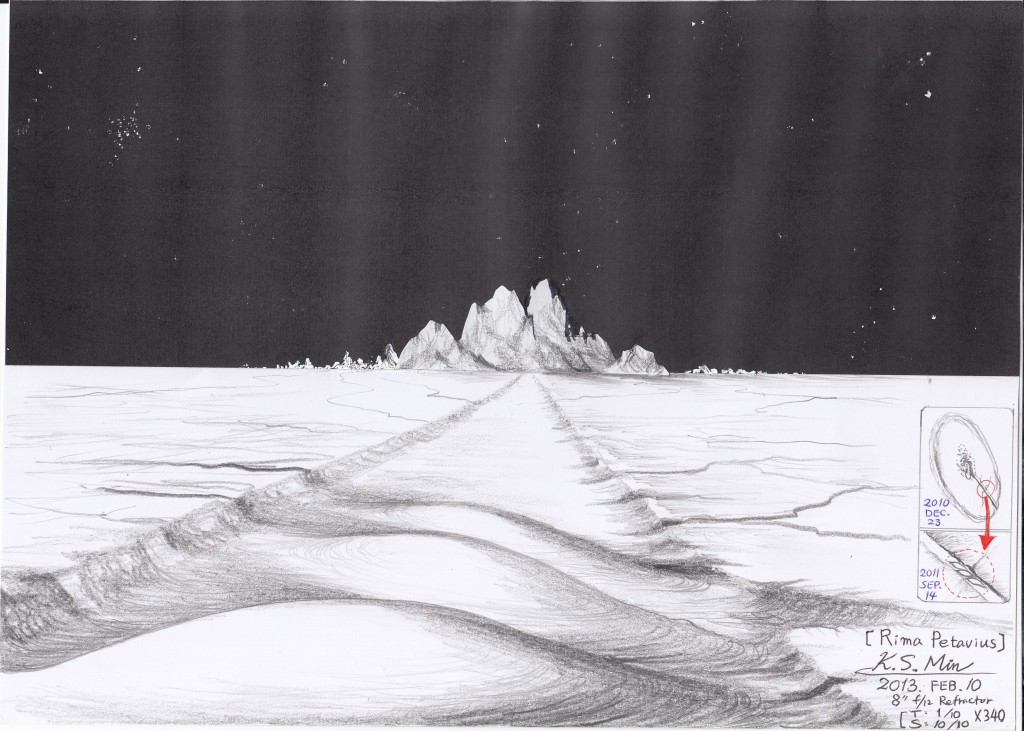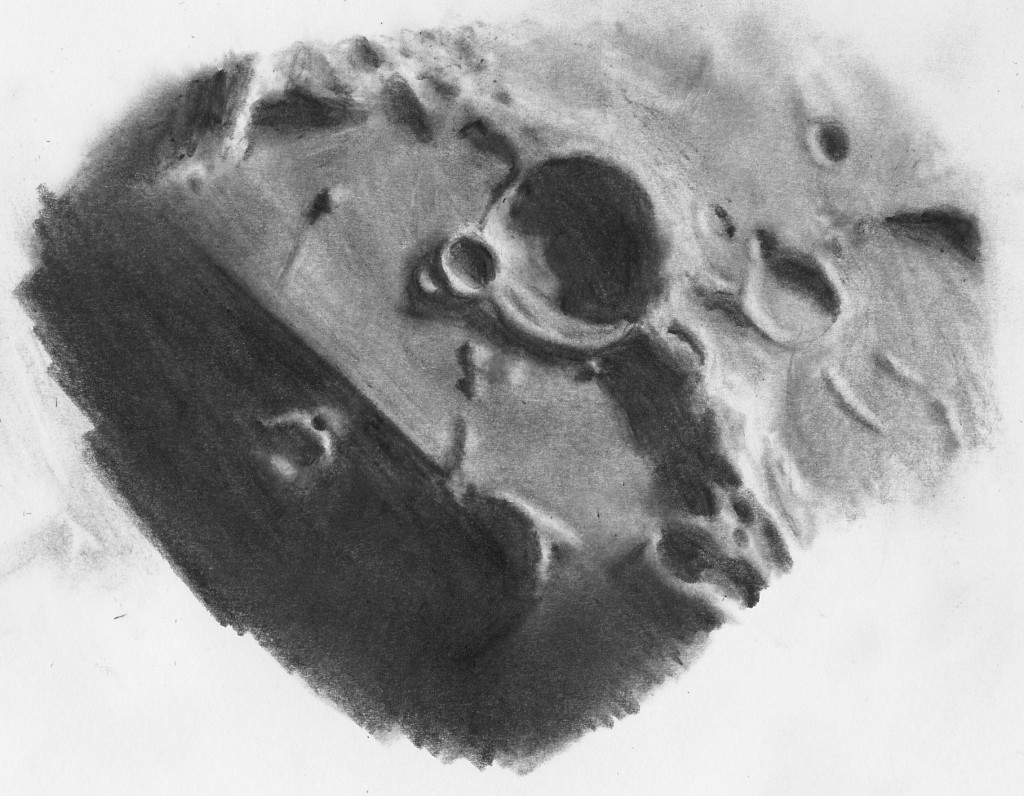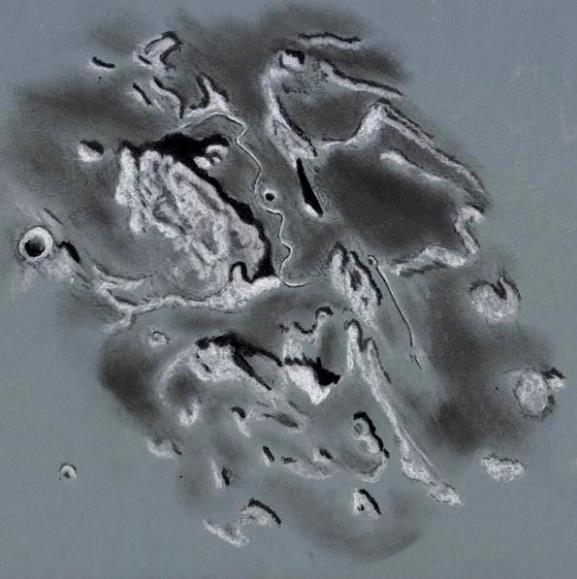
Apollo 15 Landing Site
Last evening proved to be a fine night for observing the Moon and the planets. The atmosphere at sunset settled down to a Pickering 8/10 and 9/10 for brief intervals. This was predicted so I had two telescopes outside (my 18 inch f/4.9 and 13.1 inch f/6 both Dobsonians). At 373x using the 18 inch scope I could clearly see the floor of Palus Putredinis (The Marsh of Decay) and not far away Rima Hadley at the foot of Montes Apenninus. I spent a 3 hour interval on this sketch but actual sketching time was more like 2 hours. The sketch was done using the smaller scope because it is driven. 4 mm and 6 mm eyepieces gave me magnifications of 499x and 333x and occasionally I used the 18 inch scope to verify some of the meanders of Hadley rille and other small features. I have marked the landing site (red dot) of Apollo 15 Lunar Landing Module which occurred the summer of 1971, a very exciting time for the US space program.
Craters visible in this sketch include Hadley C 6 km. in diameter and Aratus (10 km.).
Sketching:
For this sketch I used: Gray sketching paper, 9”x 11”, white and black Conte’ pastel pencils and blending stumps.
Telescopes: 13.1 inch f/ 6 Dobsonian and 18 inch F/4.9, eyepieces : 4mm, 6mm
Date: April 29, 2015 01:00-04:00 UT
Temperature: 4.4°C (40°F)
Clear, calm
Seeing: Pickering 8.5
Transparency: 4/5
Co longitude: 29.9°
Lunation: 10 days
Illumination: 75.9 %
Frank McCabe
